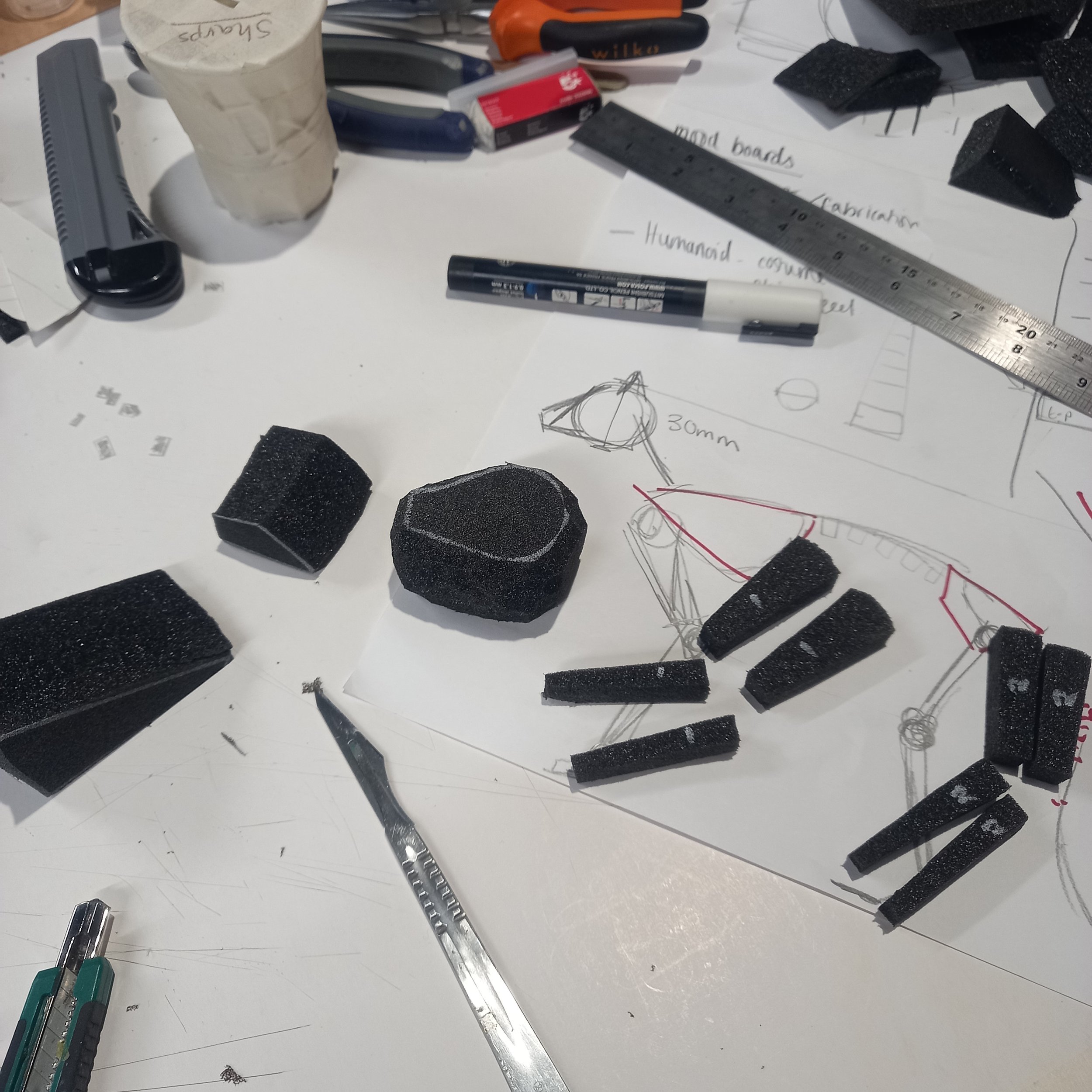Fabrication: Cat Puppet
With my mentors Elizabeth Johnson (Elizabeth Johnson Makes) and Cat Rock (House of Funny Noises), we settled on creating a robot cat for our animal puppet and - borrowing some techniques from stop motion - a wire armature for the skeleton of it. This would form the basis of our puppet’s body and limbs, onto which we would then build up its robotic form.
After a couple of experiments with wire armatures, we eventually settled on using loops of one continuous piece of wire twisted together to form the spine, neck, shoulders, hips, and three of the cat’s limbs. These were looped several times to create at least three strands of wire for each part, before being twisted together.
The fourth limb was made separately and consisted of two parts, an upper humerus and a lower radius/ulna, metacarpus, and phalanges. The wire of these limbs and and the shoulder/scapula joint, was twisted in such a way as to form a tongue-and-groove joint as you might find with wooden puppet limbs. The benefit of this was additional strength in the joints, while at the same time limiting side to side motion, so that the foreleg would move like a real cat’s.
This wire armature was then strengthened at the shoulders and hips, and the humerus and femurs, with Milliput. Onto this frame, carved foam and plasticard was attached, as well as an assortment of spare computer parts, wires, bolts, and washers to give it a more mechanical feel.
Same as with the humanoid puppet, I found the head the hardest part; we experimented with a variety of foams and head shapes, carving multiple versions, as well as an origami version filled with expanding foam, before settling finally on a very high density foam and minimalist design that featured plasticard ears.
The head itself was attached to the body with a simple wire loop, giving it a wide range of movement, while K&S square brass tubes were added as sockets for the metal rods to the back of the head and underneath the chin…
As we experimented with the rods and methods of manipulation however, we hit upon the idea of using a small ball and socket magnet (a type that I often use when making posable gaming miniatures) in the chin. The ball fitted perfectly with the K&S and allowed a metal rod, mounting the matching socket magnet, to click right into place. This created a strong connection, but the freedom to move and change the angle of the rod while puppeteering the head, giving a range of interesting cat-like movements to it.
The final aspect of our cat, was the tail. For this we created a simple tail mechanism; a piece of foam carved into the shape of a tail that had angled wedges carefully cut from it to allow it to bend in a controlled fashion. To this, a piece of cotton thread was carefully sewn through the foam passing through each remaining segment along one side and then back down the other - by manipulating the thread, pulling it side to side, the tail would then swish back and forth.
A dirty, desert-scratched paint job and bright blue eyes, finished off the cat.
All of this gave us a fully posable puppet, one that could be bent into various cat-like positions, with a head and one foreleg that could be controlled with rods, and a tail mech that could be operated with one hand.



